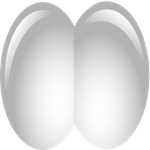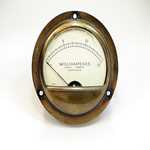- Hide translation

 ptomaine
ptomaine /ˈtoʊmeɪn/
ptomaine
ptomaine /ˈtoʊmeɪn/
noun
-
A term for food poisoning that is no longer in scientific use; food poisoning was once thought to be caused by ingesting ptomaines
 (
ptomaine
, ptomaine poisoning
)
(
ptomaine
, ptomaine poisoning
)
a term for food poisoning that is no longer in scientific use; food poisoning was once thought to be caused by ingesting ptomaines

-
Any of various amines (such as putrescine or cadaverine) formed by the action of putrefactive bacteria
 (
ptomain
, ptomaine
)
(
ptomain
, ptomaine
)
any of various amines (such as putrescine or cadaverine) formed by the action of putrefactive bacteria

 gempylid
gempylid /ˈdʒɛmpɪlɪd/
gempylid
gempylid /ˈdʒɛmpɪlɪd/
noun
-
Snake mackerels; elongated marine fishes with oily flesh; resembles mackerels; found worldwide
 (
gempylid
)
(
gempylid
)
snake mackerels; elongated marine fishes with oily flesh; resembles mackerels; found worldwide
 The fish market had a variety of fish on display, including the long-bodied gempylid.
The fish market had a variety of fish on display, including the long-bodied gempylid.
The fish market had a variety of fish on display, including the long-bodied gempylid.


 a
a /eɪ/
a
a /eɪ/
article
-
(


 )
"A" is an indefinite article in English, used before singular nouns that are unspecified or not yet known to the listener. "An" is used before a vowel sound, "a" otherwise
)
"A" is an indefinite article in English, used before singular nouns that are unspecified or not yet known to the listener. "An" is used before a vowel sound, "a" otherwise  (
a
, an
)
(
a
, an
)
"A" is an indefinite article in English, used before singular nouns that are unspecified or not yet known to the listener. "An" is used before a vowel sound, "a" otherwise
 A
A
noun
-
(
 )
A metric unit of length equal to one ten billionth of a meter (or 0.0001 micron); used to specify wavelengths of electromagnetic radiation
)
A metric unit of length equal to one ten billionth of a meter (or 0.0001 micron); used to specify wavelengths of electromagnetic radiation  (
angstrom
, angstrom unit
, A
)
(
angstrom
, angstrom unit
, A
)
a metric unit of length equal to one ten billionth of a meter (or 0.0001 micron); used to specify wavelengths of electromagnetic radiation
 Light has a wavelength in the range of 400–700 nm.
Light has a wavelength in the range of 400–700 nm.
Light has a wavelength in the range of 400–700 nm.

-
The blood group whose red cells carry the A antigen
 (
A
, group A
, type A
)
(
A
, group A
, type A
)
the blood group whose red cells carry the A antigen
-
The 1st letter of the Roman alphabet
 (
A
)
(
A
)
the 1st letter of the Roman alphabet
-
The basic unit of electric current adopted under the Système International d'Unités
 (
A
, ampere
, amp
)
(
A
, ampere
, amp
)
the basic unit of electric current adopted under the Système International d'Unités
 A typical household circuit carries 15 to 50 amps
A typical household circuit carries 15 to 50 amps
a typical household circuit carries 15 to 50 amps

-
(biochemistry) purine base found in DNA and RNA; pairs with thymine in DNA and with uracil in RNA
 (
A
, adenine
)
(
A
, adenine
)
(biochemistry) purine base found in DNA and RNA; pairs with thymine in DNA and with uracil in RNA
-
One of the four nucleotides used in building DNA, also known as deoxyadenylate, or dAMP; all four nucleotides have a common phosphate group and a sugar (ribose)
 (
A
, deoxyadenosine monophosphate
)
(
A
, deoxyadenosine monophosphate
)
one of the four nucleotides used in building DNA, also known as deoxyadenylate, or dAMP; all four nucleotides have a common phosphate group and a sugar (ribose)
-
Any of several fat-soluble vitamins essential for normal vision; prevents night blindness, inflammation or dryness of the eyes
 (
A
, antiophthalmic factor
, axerophthol
, vitamin A
)
(
A
, antiophthalmic factor
, axerophthol
, vitamin A
)
any of several fat-soluble vitamins essential for normal vision; prevents night blindness, inflammation or dryness of the eyes

 chocolate syrup
chocolate syrup /ˈtʃɒklɪt ˈsɪrəp/
chocolate syrup
chocolate syrup /ˈtʃɒklɪt ˈsɪrəp/
noun
-
Sauce made with unsweetened chocolate or cocoa and sugar and water
 (
chocolate sauce
, chocolate syrup
)
(
chocolate sauce
, chocolate syrup
)
sauce made with unsweetened chocolate or cocoa and sugar and water








